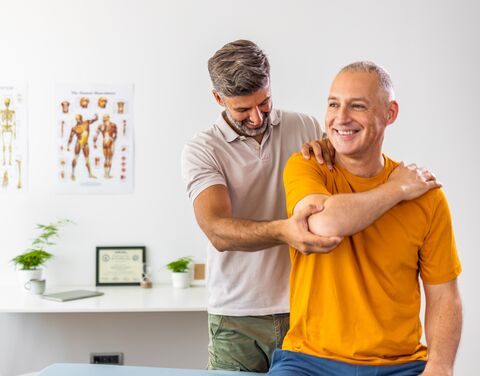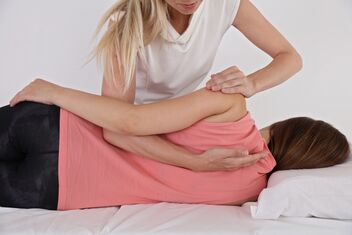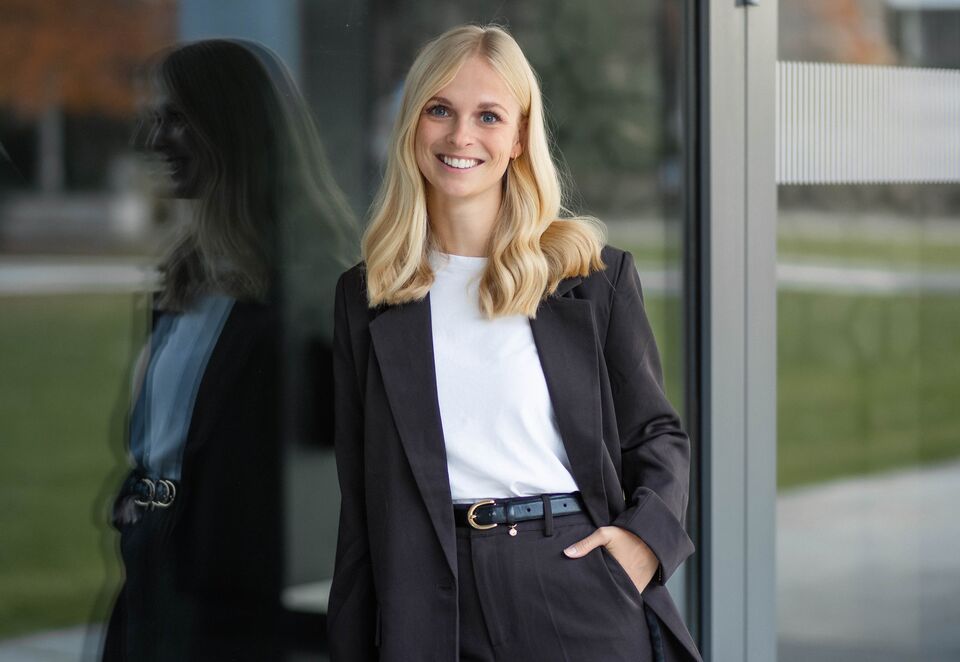
Rolfing, Dorn, and polarity therapy: Are you familiar with these alternative treatment methods?
Rolfing, the Dorn method, and polarity therapy: What is that exactly? Around half of the Swiss population have already tried alternative treatments, but these three are still relatively unknown. They offer a number of advantages.
Back pain, tension, and a disturbed balance in the body – these are complaints that many people struggle with these days. These symptoms can severely affect daily life and often require comprehensive treatment that goes beyond traditional methods. This is precisely where alternative treatment methods such as Rolfing, the Dorn method or polarity therapy come into play. They offer unique approaches to rebalancing the body and treating the causes of ailments holistically. In this article, you will find out which complaints these therapies help with, how they are carried out, and who pays for them.
What is Rolfing?
Rolfing is a manual fascia therapy aimed at improving posture and movement patterns.
In about ten sessions, the body is brought back to its natural position determined by gravity through targeted deep connective tissue work. The aim is to relieve tension and incorrect postures that often arise from stress or unnatural movement patterns. Rolfing thus promotes freedom of movement and supports the natural flow of energy in the body. In Switzerland, the method is used by therapists who have gained experience in Rolfing therapy training.

Rolfing/Structural Integration aims to realign the body and correct abnormal postures.
Where does Rolfing come from?
The treatment was originally called Structural Integration, but later the term Rolfing came to prevail, based on the founder’s name: Ida Rolf. Ida Rolf was an American biochemist. In the 1920s, she was researching treatment options for chronic illnesses of the musculoskeletal system at the Rockefeller Institute for Medical Research in New York and subsequently developed the method.
What is the Dorn method?
The Dorn method is used for back and neck pain in particular. It is based on returning displaced vertebrae to their normal position – without much effort. Thumb pressure is often enough.
It is named after Bavarian farmer Dieter Dorn, who after suffering from lumbago in 1975 visited a colleague in a neighboring village who relieved him of his pain with simple hand movements. Dorn learned this technique and then successfully used it on his circle of friends. An orthopedic surgeon became aware of it and encouraged Dorn to pass on his method in seminars.
Therapy from head to toe
Characteristic of spinal therapy according to Dorn is the anabolic sequence. Complete treatment begins with the feet, followed by the legs, pelvis, and spine up to the head. Attention is also paid to the length of the legs, as a difference here can often lead to misalignments and back pain. Patients are not inactive in the process: They have to actively move and help to become pain-free again. Bruno Laetsch has been working as a Dorn therapist for 16 years and sees the effect of the therapy on a daily basis: “Patients come into my practice doubled up with pain and leave walking upright.”
Does Dorn therapy also help with a herniated disc?
Dorn therapy can have a supportive effect in the event of a herniated disc by relieving the strain on the spine and correcting misalignments. However, it is not a substitute for medical treatment and should only be used in consultation with a specialist.
Targeted regeneration through Dorn-Breuss therapy
Dorn-Breuss therapy combines the Dorn therapy with the gentle Breuss massage, which is applied along the spine. The Breuss massage aims to promote the regeneration of the intervertebral discs and to release deep-seated tensions in the back. St. John’s wort oil is often used to reinforce the effect.
Together, the two methods offer a holistic treatment that can relieve both physical and energy blockages.
What is polarity therapy?
The polarity method is all about the energy flows in the body. More specifically, it is about harmonizing life energy to enable long-term healing. This happens through the interaction of mindfulness, body work, conversations, selected yoga practices, and nutrition. Treatment is not only beneficial for various physical ailments but also for psychological problems.
Polarity was developed by Dr. Randolph Stone, who combined his knowledge of chiropractic medicine, osteopathy, naturopathy, and neuropathology with elements from Ayurvedic and ancient Egyptian medicine to create a new treatment method.
Exercise for a stiff neck
You can also try out the principle of polarity treatment yourself without any problems. If your neck is tense, rub the palms of your hands together until you feel the heat energy. Then place your left hand on your neck and place your right hand below your throat, making sure to breath deeply in and out. Can you feel the effect?
“Polarity therapy can reveal and compensate for imbalances in the body.”
How much do Rolfing, the Dorn method and polarity therapy cost?
The costs of the three methods vary depending on the therapist and location:
- Rolfing: A session usually costs between CHF 150 and CHF 200, depending on the therapist’s experience and the duration of the treatment.
- Dorn therapy: Prices are usually between CHF 100 and CHF 150 per session. Full treatment often requires several sessions.
- Polarity therapy: The costs generally range from CHF 120 to CHF 160 per session.
Who pays for Rolfing, the Dorn method and polarity therapy?
The costs of Rolfing, Dorn and polarity therapies are not covered by basic health insurance. With supplementary insurance, however, part of the treatment costs can be reimbursed.
What does supplementary insurance from AXA pay for these treatments?
Supplementary outpatient insurance from AXA allows partial reimbursement of the costs of treatment provided that the treatment is administered by a recognized specialist. Suitable therapists for Rolfing, Dorn or polarity therapy can be found via our therapist search. With AXA’s COMPLET insurance model, you receive 75 percent of the therapy costs, up to CHF 3,000 per year.
Do Rolfing, Dorn and polarity therapies really help?
As with any alternative treatment method, there are also criticisms of Rolfing, the Dorn method and polarity therapy. Some doubt the long-term effect of the treatment and see it more as a short-term relief of symptoms. In addition, it is often criticized that the effectiveness of the methods has not been scientifically proven. Nevertheless, many patients swear by the positive effects and the restoration of their mobility after Rolfing, Dorn or polarity therapy.






